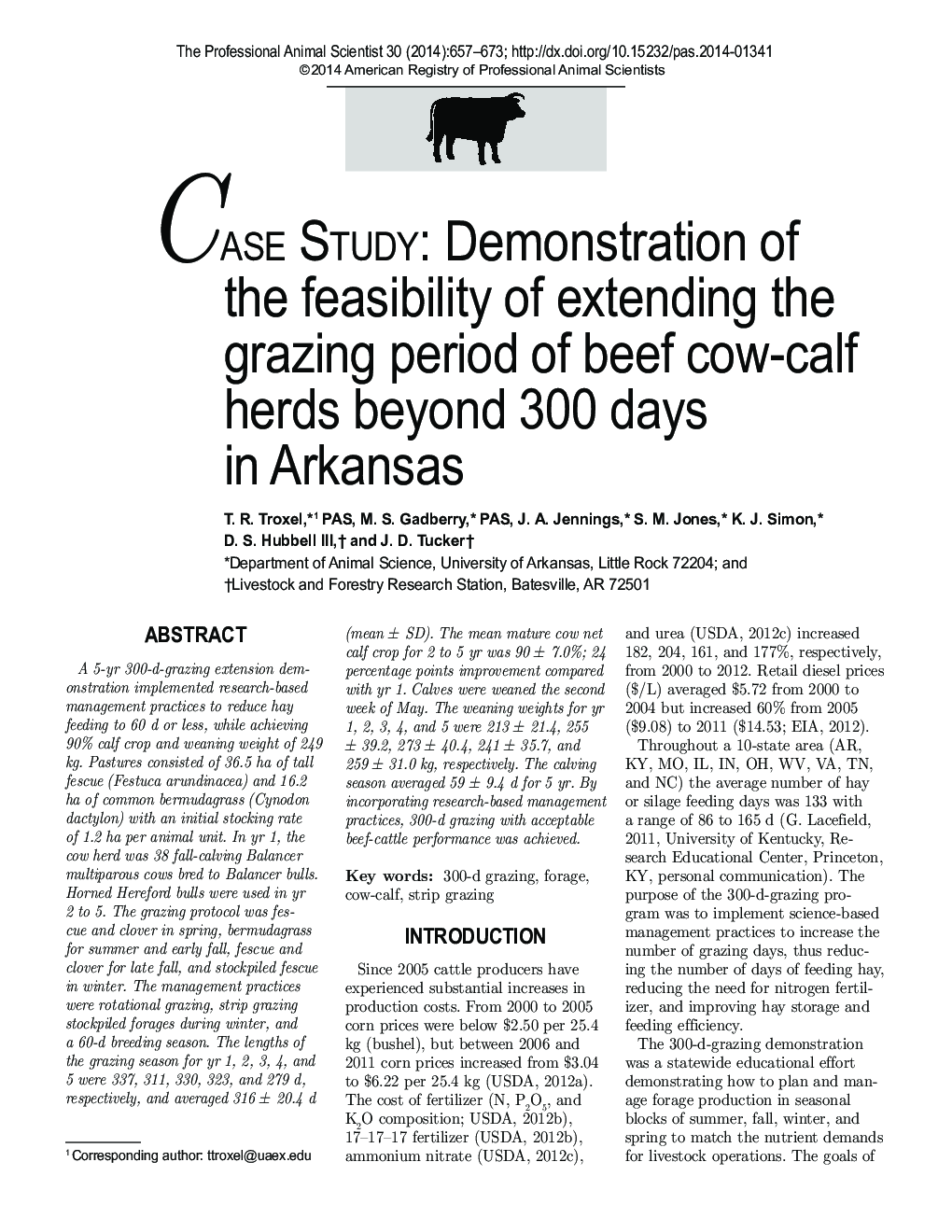| Article ID | Journal | Published Year | Pages | File Type |
|---|---|---|---|---|
| 2453813 | The Professional Animal Scientist | 2014 | 17 Pages |
Abstract
A 5-yr 300-d-grazing extension demonstration implemented research-based management practices to reduce hay feeding to 60 d or less, while achieving 90% calf crop and weaning weight of 249 kg. Pastures consisted of 36.5 ha of tall fescue (Festuca arundinacea) and 16.2 ha of common bermudagrass (Cynodon dactylon) with an initial stocking rate of 1.2 ha per animal unit. In yr 1, the cow herd was 38 fall-calving Balancer multiparous cows bred to Balancer bulls. Horned Hereford bulls were used in yr 2 to 5. The grazing protocol was fescue and clover in spring, bermudagrass for summer and early fall, fescue and clover for late fall, and stockpiled fescue in winter. The management practices were rotational grazing, strip grazing stockpiled forages during winter, and a 60-d breeding season. The lengths of the grazing season for yr 1, 2, 3, 4, and 5 were 337, 311, 330, 323, and 279 d, respectively, and averaged 316 ± 20.4 d (mean ± SD). The mean mature cow net calf crop for 2 to 5 yr was 90 ± 7.0%; 24 percentage points improvement compared with yr 1. Calves were weaned the second week of May. The weaning weights for yr 1, 2, 3, 4, and 5 were 213 ± 21.4, 255 ± 39.2, 273 ± 40.4, 241 ± 35.7, and 259 ± 31.0 kg, respectively. The calving season averaged 59 ± 9.4 d for 5 yr. By incorporating research-based management practices, 300-d grazing with acceptable beef-cattle performance was achieved.
Related Topics
Life Sciences
Agricultural and Biological Sciences
Animal Science and Zoology
Authors
T.R. PAS, M.S. PAS, J.A. Jennings, S.M. Jones, K.J. Simon, D.S. III., J.D. Tucker,
